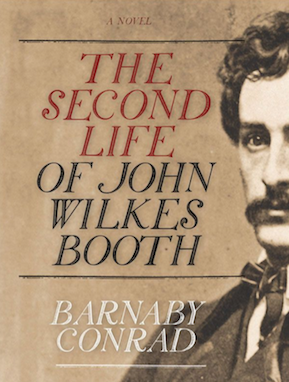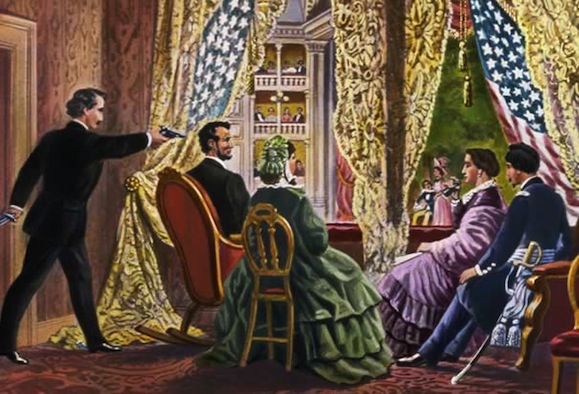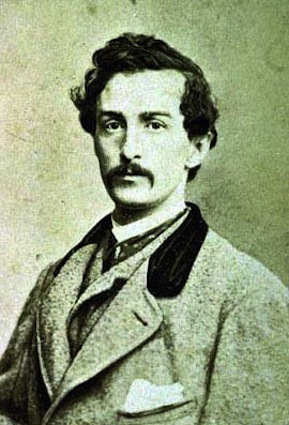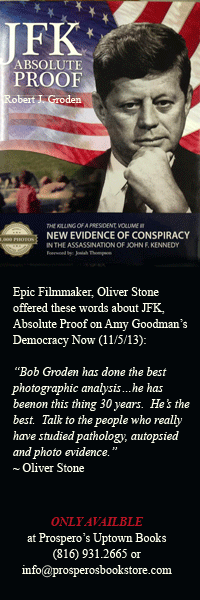 I wrote this book review last fall before the author, Barnaby Conrad, Jr. died. His son, the book’s editor, Barnaby Conrad, III is my brother-in-law. When I spoke to Steve Paul, the book review editor at the Kansas City Star, about submitting this piece, he told me The Star would not even consider publishing such a review since I knew the book’s author When I asked why someone who knew a writer personally was automatically disqualified from reviewing a book, he said this was the paper’s policy and no explanation was needed.
I wrote this book review last fall before the author, Barnaby Conrad, Jr. died. His son, the book’s editor, Barnaby Conrad, III is my brother-in-law. When I spoke to Steve Paul, the book review editor at the Kansas City Star, about submitting this piece, he told me The Star would not even consider publishing such a review since I knew the book’s author When I asked why someone who knew a writer personally was automatically disqualified from reviewing a book, he said this was the paper’s policy and no explanation was needed.
With that caveat, I thought KC Confidential’s readership might be interested in the last work of an established writer before his death in February, even though I must confess that I met him once 10 years ago. The Second Life of John Wilkes Booth by Barnaby Conrad
The reaction to literary “relics,” newly discovered works by long departed authors, has been a mixed one.
Ernest Hemingway‘s “A Moveable Feast” was justifiably hailed as a masterpiece when it came out in 1964. The same author’s “Islands In The Stream” was considered, by contrast, a disappointment when it appeared in 1970 after considerable build-up in the press.
However, there is nothing ambivalent in the kind of reaction the most recently unearthed relic should be greeted with.
 Barnaby Conrad, Jr.’s “The Second Life of John Wilkes Booth” is based on a story idea first conceived in 1947 by American literary icon Sinclair Lewis, best known as the author of “Main Street” and “Babbit.”
Barnaby Conrad, Jr.’s “The Second Life of John Wilkes Booth” is based on a story idea first conceived in 1947 by American literary icon Sinclair Lewis, best known as the author of “Main Street” and “Babbit.”
It is the long-deferred fruition of an idea, finally brought to life by 89 year-old author Conrad, Lewis’s one-time personal assistant.
Early one morning almost 65 years ago, Lewis and the then 25 year-old Conrad were discussing possible book plots over coffee at Lewis’s estate near Williamstown, Massachusetts. The older novelist floated the question of what could have happened if Abraham Lincoln‘s assassin had not died in a burning tobacco barn in 1865, shot by a Union soldier with the improbable name of Boston Corbett.
After all, Lewis reasoned, wouldn’t a lot of people have wanted Booth – or someone thought to be Booth – dead for reasons of their own? (Some think there were other plotters, perhaps even within Lincoln’s own cabinet, who were never discovered. Others would, of course, have wanted to collect the $50,000 reward for the killer, dead or alive.)
In an era when methods of personal identification like fingerprints and DNA testing were decades into the future, it would have been very easy to substitute some other person’s body for that of Booth’s and then insist on a hurried burial at an “undisclosed location”. (Enough doubt remains that Booth’s descendants have recently petitioned the federal government to have his corpse exhumed to make sure the actual John Wilkes Booth was buried in what was supposed to be his grave.)
Lewis was excited enough about this idea that he made the aspiring young author promise to write this story before he wrote anything else, even typing up a written agreement on how royalties were to be shared between them. (This agreement is reproduced in the appendix to this book.)
It turns out no one was better equipped to take this spark and fan it into a blazing tale of suspense than Lewis’s assistant, now an accomplished writer himself, with 35 books to his credit since that pre-dawn conversation 60-plus years ago.
 With the able editing assistance of his son, Barnaby Conrad, III, also a successful author, Conrad has taken the tale to the next level.
With the able editing assistance of his son, Barnaby Conrad, III, also a successful author, Conrad has taken the tale to the next level.
What if the “real” John Wilkes Booth had escaped his pursuers in Virginia and instead fled to the American frontier? What was to prevent him from assuming a new identity, and with it a new life, especially in a part of the world where people were reluctant to ask awkward questions about a stranger’s past, lest the same kind of questions be asked of them?
Suffice it to say that the resulting story is not only believable but compelling. One of the most intriguing characters is “Langford Upham”, a young journalist who senses a cover up in the immediate aftermath of the supposed Booth’s death. Upham starts out with the reader’s full sympathy as he relentlessly pursues the man he suspects is the real Booth, but in a clever twist by author Conrad, it is Booth himself that we’re pulling for to get away in the end.
 The subject of the book is also a timely one, especially in the wake of the Gabrielle Giffords incident, since it allows us to get inside the fevered mind of someone intent on political murder.
The subject of the book is also a timely one, especially in the wake of the Gabrielle Giffords incident, since it allows us to get inside the fevered mind of someone intent on political murder.
In the final analysis the book is quite simply an exciting read, but with the added bonus of illuminating an era of our history that continues to fascinate each new generation of Americans, just as it has three generations of writers whose efforts produced this engrossing tale.










Good review
You REALLY don’t understand why a newspaper is not looking to print a review written by someone with family ties to the author?
Glazer writes reviews about people going to be at his own club every damn week and some people seem to fall all over themselves yakking about how good it is so what’s the difference?
Is the KC Star publishing Glazer’s weekly club promos?
I don’t think so.
In an era where media conglomerates routinely call on “experts” for advice but don’t reveal those same experts are also on their payroll, it seems like putting a band-aid on a sucking-chest wound.
Here’s my take: The Star could have easily run Sutherland’s review with a simple disclosure of the relationship. End of controversy.
I agree
Very cool. I will read it.
Hey Mr. Sells, how weird is THIS story?
“One of the individuals identified by 4chan users as a possible Boston bombing accomplice has been found dead in the Providence River.
“Police in Providence pulled a man’s body from the Providence River on Tuesday, and authorities said it is “very possible” that it is Sunil Tripathi, 22, a former Brown University student who has been missing since mid-March,” reports the Boston Globe.
Tripathi’s possible connection to the Boston bombing was first raised by users of the 4chan website when it was pointed out that his image bore a similarity to one of the suspects first named by the FBI who later turned out to be Dzhokhar A. Tsarnaev.
Users of the Reddit website later apologized to Tripathi’s family for making the erroneous connection, with one moderator writing, “We cannot begin to know what you’re going through and for that we are truly sorry.”
According to Zero Hedge, the misidentification of Tripathi as one of the Boston bombing culprits means it “could be time to reevaluate the crowdsourced approach to “solving” crimes.”
However, given the innumerable other contradictions that skeptics of the official narrative behind the bombings have put forward, with particular emphasis on the possibility that the Tsarnaev brothers may have been patsies or otherwise radicalized or duped by intelligence agencies, Tripathi’s death takes on more prominence.
– Tamerlan Tsarnaev attended a workshop sponsored by the CIA-linked Jamestown Foundation.
– Tamerlan Tsarnaev was on both CIA and FBI watchlists in addition to drawing the attention of Russian investigators who attempted to alert the FBI in 2011.
– Former FBI employee Sibel Edmonds believes the two alleged bombers could have been recruited by the FBI.
– Zubeidat Tsarnaeva, the mother of the alleged bombers, claims the men were “framed by the authorities” and that the video of a naked man being arrested on the night the suspects were captured, which authorities claim was an unrelated individual who was later released, was in fact Tamerlan Tsarnaev. The video shows an uninjured man being led to a squad car, whereas police claim Tsarnaev was badly injured when he was captured and later died in the hospital.
– The alleged bombers’ aunt Maret Tsarnaeva also claims that the man seen being arrested in the video was Tamerlan Tsarnaev. She also says that she was threatened and told not to speak to the media.
– Contradicting claims by authorities that Dzhokhar Tsarnaev ran over his own brother, an eyewitness to the incident said that police ran over Tsarnaev with an SUV and then pumped bullets into him”
Chuck
As referenced on debka.com there is strong evidence, provided by Israeli Intelligence, to suggest that the Tsarnaev Brothers were on the US payroll. The article is still up.
Gotta keep your friends close and enemies closer.
Wow.
Debka is a joke. Rarely is that info reliable.
Mr Sutherland, another great story! It’s really great to see more quality stuff getting written here. A great read; I’m going to fall victim, once again, to my Amazon “one click” button.